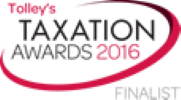There has been a notable increase in remote working over the last decade. This is unsurprising as business becomes more global and technology advances. However, the trend has been kicked into overdrive in the last year, due to Covid-19. In many countries, Governments have urged people to work from home, when possible. Many companies themselves have also told their workforce to complete tasks remotely.
This mass exodus from the office has caused a shift in our relationship with work. Whilst the majority of employees will return to the office when it’s safe to do so, some won’t. Remote working offers many benefits and more people are realising this for the first time.
With this surge in popularity of remote working, businesses need to adapt. The way in which a company approaches their staff should be different according to whether they’re in-house or work from home. Therefore, what is the best approach to managing a remote workforce?
Expectations
Workers need to know what is expected from them, when it comes to workload, deadlines, aims, policy etc. When working in an office environment, these expectations are much more accessible but remote workers can sometimes fall out of the loop. It’s therefore the managers responsibility to ensure all of their workers know this information, both in-house and remote.
Communication
Another accessibility issue is communication. Those who work in an office can easily have a quick word with their manager or team member, but this is obviously different for those who work from home. It’s important for managers to maintain open and regular communication with their remote workforce. This means replying to emails and returning calls promptly. This doesn’t just make the working day easier for those at home, it also ensures that more work is done, which benefits everyone.
Furthermore, it’s important to layout appropriate office hours for communication. When can your employees get in touch and when can they expect a reply- again something that is intrinsic within an office environment but needs to be iterated for a remote workforce.
Acknowledgement
When it comes to encouraging employees, recognising and celebrating good work is vital. When working in the office, a manager may give a speech, put something up on a notice board or even take the staff out for a meal. For those working from home, it can be easy to feel left out and undervalued. Therefore, it’s important for you to acknowledge all success, from both office and home workers. Obviously, things are a little bit different with remote workers but you can still get all of your staff together to celebrate success, just virtually.
Benefits
Employee benefits and rewards are not only motivating for staff, they also create fantastic word of mouth for the business. Again, benefits can sometimes work differently for those who work remotely, compared with their in-house counterparts. With this in mind, it may be pertinent to design your benefits and rewards with remote workers in mind, this way everyone is eligible.
The perks that you choose to offer your employees are dependent on your company, budget and what you have to offer. However, there are a variety of benefits to choose from, including staff events, vouchers, gift cards, technology, workplace upgrades or even at home services such as cleaning or meal delivery.
Business is going through a substantial change and it’s likely that remote working is only going to grow in popularity in the future. Therefore, it’s imperative that companies adapt to this development now, ensuring they are future-proof and remain viable options for employees.














